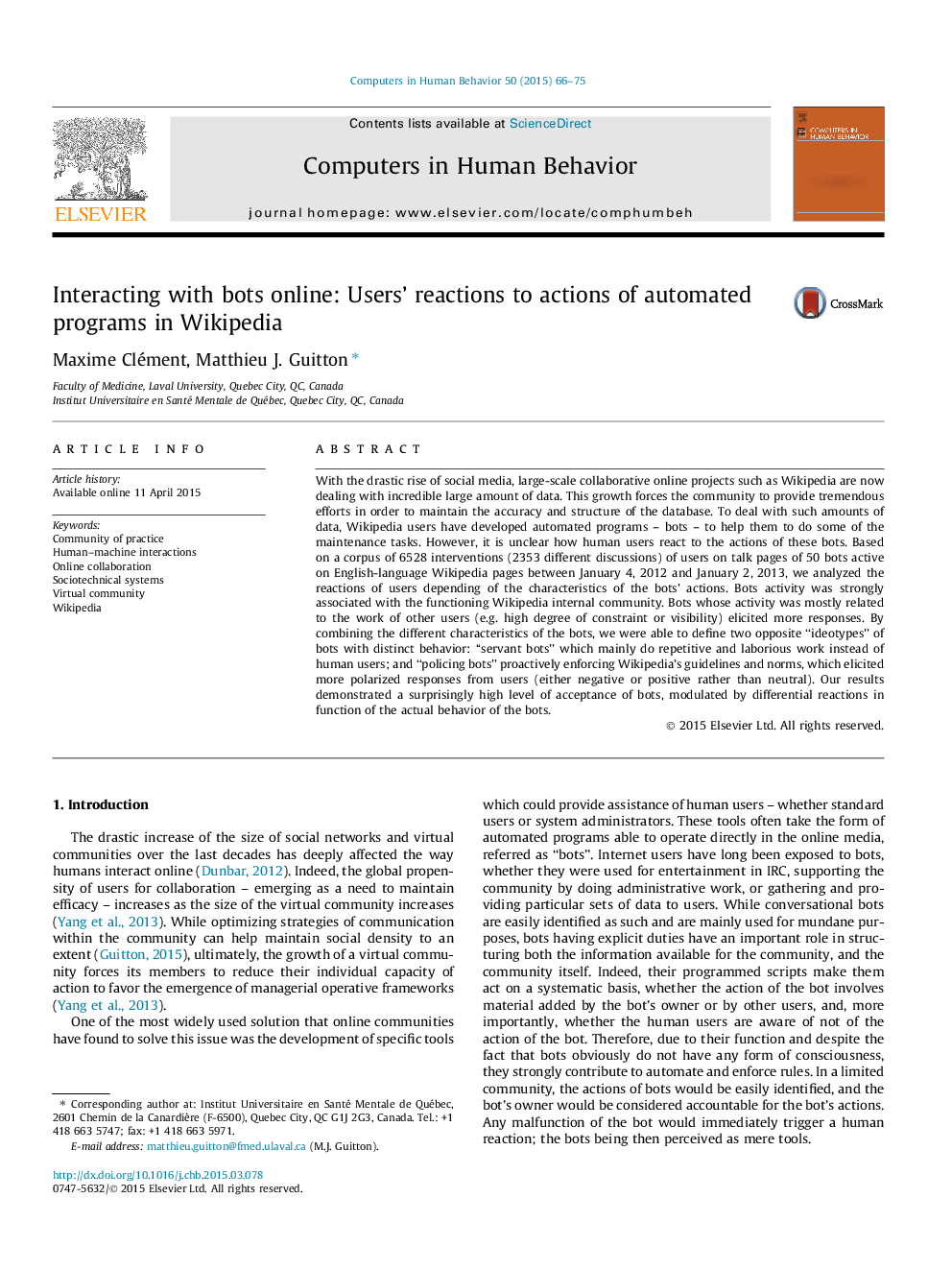| Article ID | Journal | Published Year | Pages | File Type |
|---|---|---|---|---|
| 6838117 | Computers in Human Behavior | 2015 | 10 Pages |
Abstract
With the drastic rise of social media, large-scale collaborative online projects such as Wikipedia are now dealing with incredible large amount of data. This growth forces the community to provide tremendous efforts in order to maintain the accuracy and structure of the database. To deal with such amounts of data, Wikipedia users have developed automated programs - bots - to help them to do some of the maintenance tasks. However, it is unclear how human users react to the actions of these bots. Based on a corpus of 6528 interventions (2353 different discussions) of users on talk pages of 50 bots active on English-language Wikipedia pages between January 4, 2012 and January 2, 2013, we analyzed the reactions of users depending of the characteristics of the bots' actions. Bots activity was strongly associated with the functioning Wikipedia internal community. Bots whose activity was mostly related to the work of other users (e.g. high degree of constraint or visibility) elicited more responses. By combining the different characteristics of the bots, we were able to define two opposite “ideotypes” of bots with distinct behavior: “servant bots” which mainly do repetitive and laborious work instead of human users; and “policing bots” proactively enforcing Wikipedia's guidelines and norms, which elicited more polarized responses from users (either negative or positive rather than neutral). Our results demonstrated a surprisingly high level of acceptance of bots, modulated by differential reactions in function of the actual behavior of the bots.
Related Topics
Physical Sciences and Engineering
Computer Science
Computer Science Applications
Authors
Maxime Clément, Matthieu J. Guitton,
